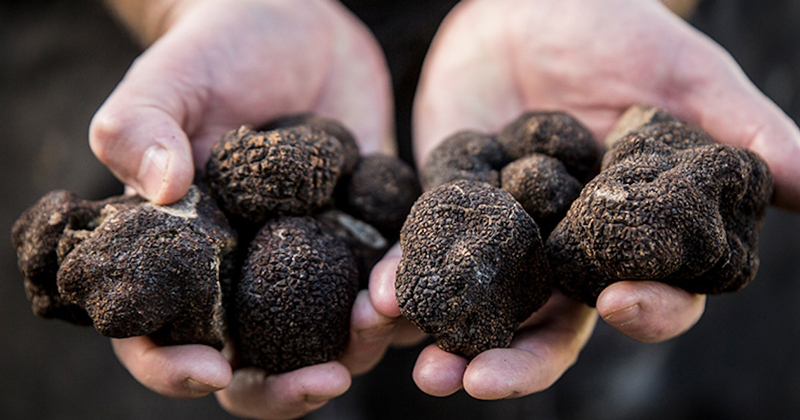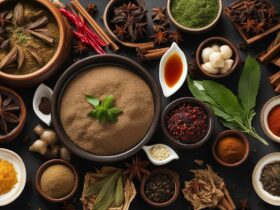What Are Black Truffles?
Black truffles, scientifically known as Tuber melanosporum, are a type of fungus that grows underground in association with the roots of specific tree species, such as oak, hazelnut, and beech. They are highly prized for their aromatic qualities, which resemble a mix of earthy, nutty, and musky notes. Black truffles have a rough exterior with a dark, almost black color, and their flesh ranges from marbled black to dark brown.The History of Black Truffles
The history of black truffles traces back centuries. Ancient civilizations, including the Egyptians and Greeks, were aware of the culinary and medicinal properties of truffles. However, it was during the Renaissance in Europe that truffles gained widespread popularity among the nobility and aristocracy. They were considered a delicacy and associated with luxury and indulgence.Cultivation of Black Truffles
Cultivating black truffles is a complex and time-consuming process. These fungi require a specific combination of soil type, climate, and tree symbiosis to grow successfully. Truffle orchards, known as truffières, are carefully established, and the trees are inoculated with truffle spores. It takes several years of patience and meticulous care before the truffle-producing trees yield their first harvest.Black Truffles in Gastronomy
Black truffles are highly esteemed in the culinary world for their ability to enhance the flavors of dishes. They are often used sparingly due to their potent taste and aroma. Chefs employ various techniques to incorporate black truffles into their creations, such as shaving them over pasta, infusing them into oils, or using them in sauces and risottos. The addition of black truffles can elevate a simple dish into a gastronomic masterpiece.Health Benefits of Black Truffles
Apart from their culinary appeal, black truffles also offer certain health benefits. They are a good source of essential nutrients, including vitamins, minerals, and antioxidants. Black truffles are believed to have antibacterial and anti-inflammatory properties. Additionally, they are low in calories and fat, making them a healthier option compared to some other indulgent ingredients.How to Use Black Truffles in Cooking
Using black truffles in cooking requires some finesse to fully appreciate their unique flavors. To unlock the full potential of black truffles, it is recommended to use them fresh and handle them delicately. Shaving or grating truffles onto warm dishes just before serving allows their aroma to infuse the food. Truffle oils and pastes are also popular options for adding truffle essence to dishes.Where to Find Black Truffles
Black truffles are primarily found in regions with a suitable climate and soil composition. The most renowned areas for black truffle production include parts of France, Italy, Spain, and Australia. These regions have a long-standing tradition of truffle cultivation and offer unique terroirs that contribute to the development of exceptional truffle flavors.Black Truffle Festivals and Events
Black truffle festivals and events have gained popularity as a way to celebrate this exquisite ingredient. These festivals provide an opportunity for truffle enthusiasts to indulge in tastings, culinary demonstrations, and truffle hunts. Events such as the Alba Truffle Fair in Italy or the Perigord Truffle Festival in France attract visitors from around the world who wish to immerse themselves in the enchanting world of black truffles.The Market Value of Black Truffles
Black truffles are highly valued in the culinary market, often fetching premium prices. The rarity, difficulty in cultivation, and demand for these fungi contribute to their high market value. Truffle prices can fluctuate depending on factors such as availability, quality, and overall truffle production in a given year. The allure of black truffles as a luxurious ingredient continues to captivate both chefs and consumers alike.Black Truffles vs. White Truffles
When it comes to truffles, a comparison often arises between black truffles and white truffles. While both varieties possess unique characteristics, they differ in terms of aroma, taste, and growing regions. White truffles, known as Tuber magnatum, have a more pungent aroma and a distinct garlicky flavor. They are found primarily in regions of Italy, whereas black truffles are prevalent in several countries.Sustainability and Conservation
The increasing demand for black truffles raises concerns about sustainability and conservation. Truffle harvesting can have ecological consequences, as it disrupts the delicate balance of ecosystems. Efforts are being made to promote sustainable truffle cultivation, including the use of truffle orchards and controlled harvesting techniques. Conservation initiatives aim to protect truffle-producing regions and educate stakeholders about responsible practices.Risks and Challenges in the Black Truffle Industry
The black truffle industry faces various risks and challenges. Climate change can impact truffle production by altering the required environmental conditions. Truffle poaching, fraudulent practices, and counterfeits also pose significant threats. Furthermore, the limited knowledge and expertise in truffle cultivation make it a niche field that requires continuous research and development.Exquisite Black Garlic Recipes
Frequently Asked Questions
1. Are black truffles expensive? Yes, black truffles are considered a luxury ingredient and can be quite expensive due to their rarity and high demand. 2. How do you store black truffles? Black truffles should be stored in airtight containers or wrapped in paper towels in the refrigerator. They should be used within a week for the best flavor. 3. Can I grow black truffles in my backyard? Growing black truffles requires specific conditions and expertise. It is best to consult with truffle cultivation experts or join truffle-growing communities for guidance. 4. Can you eat black truffles raw? While black truffles can be consumed raw, they are most commonly used as a finishing touch in cooked dishes to release their aromatic flavors. 5. What is the best way to clean black truffles? Black truffles should be gently brushed orrinsed under cold water to remove any dirt or debris. It’s important to handle them with care to preserve their delicate texture.Can Low Sodium Meal Plans Incorporate Black Truffles for Flavor?
Can low sodium meal plans for balanced diet incorporate black truffles for flavor? Incorporating black truffles into low sodium meal plans is indeed possible, as these prized fungi can add a unique and savory touch to dishes. While black truffles are known for their earthy aroma, they are also a low sodium ingredient that can elevate the flavor of various meals without compromising on health.












